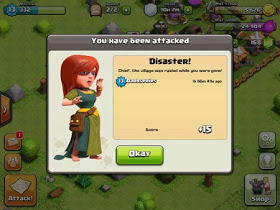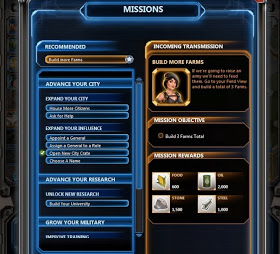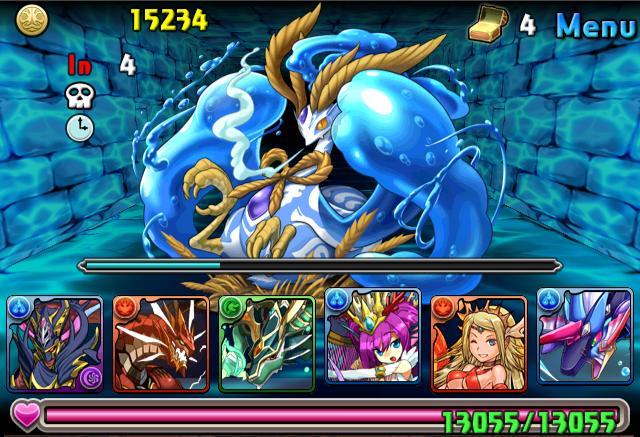Mechanics of midcore games: Part 2
A couple of weeks ago, we started publishing translations of articles by Mikhail Katkoff, product director at Scopely, about the mechanics of midcore games. Today is the second part, it’s about user retention.
Retention is the basis of a successful f2p game. Players returning to the game day after day, visiting it several times a day, in fact, allow such a distribution model to exist. But creating an incentive that returns users over and over again is undoubtedly the most difficult task for the development team. In this post I will try to explain how to solve it with the help of a thoughtful game cycle, a balanced economy and the correct use of events (events).
In Clash of Clans, events would not hurt
The main task
It seems to me that there is no better way to retain users than to lead them to the fact that they themselves began to set goals in the game.
Similarly motivated users log into the game every day (and far more than once) in order to achieve the goals that they have set themselves.
But in order for such players to arise, developers must create certain conditions for this. In other words, to stimulate the desire to “get better” among players. This is done, among other things, with the help of rewards for progress and penalties for mistakes (in the latter case, rather, we are talking about rewards for frequent visits and fines for those who rarely enter the game. The classic penalty is an attack on the base in Clash of Clans, – App2Top note).
There is a lot of freedom in Boom Beach
With the desire to become better comes the craving for progress. The thirst for growth is a powerful tool, as players set themselves subtasks and independently work on optimizing their gameplay.
I believe that the desire to get better should always be the main goal of the user in the game, and the progress in a good f2p game should depend on how much time the user spent on the game.
Personally, I like to divide motivating stimuli into two types: positive and negative.
Positive ones promise the user that he will become stronger, richer and better if he achieves his goal.
Negative ones, on the contrary, let you know that they will never achieve what they want if they stop developing in the game.
Positive and negative incentives are just like a carrot and stick
Positive incentives for progress
The in-game store is one of the best incentives to progress. The price and requirements for removing the lock (lock) from a certain product is an understandable goal for players.
By the way, the position of the product on the gaming showcase also means a lot. It essentially communicates its value. Those goods that are opened last are the most valuable, which means they are the most desirable.
Editor’s note: The problem is that users do not always run to the game store and start looking at what is in the “cache” there. There are two ways to solve this problem, both, unfortunately, are still rarely used by mobile developers.
The first way came from the market of “big” games. It boils down to the fact that in the first five minutes the user is given to steer, for example, a pumped-up character, let’s say, feel all his power. After that, the developers select all the buns.
This was the case, for example, in the first part of Assassin’s Creed. But this way has a significant disadvantage – the player needs to be told, taught these buns. Because of this, the length of the tutorial increases significantly, and with it the entry threshold.
Also, not every user will like that something was taken away from him. This can be called a negative experience.
On the other hand, it all comes down to balance. After all, the craftsmen from King work approximately according to the same scenario. In the first missions of their games, they give very tasty bonuses that allow you to effectively pass difficult stages. After the boosters run out, the user goes to the store on his own to buy more.
The second way is advertising. With certain reservations, the first way could be attributed to it, but we decided to divide the solution into two components.
Advertising is a visual demonstration that the items from the store are cooler than the ones you have. In the last Batman, if we do not confuse anything, when choosing costumes, it is shown in numbers how much this or that thing is better in terms of the characteristics of what your character is wearing.
The withdrawal of a powerful rival unit in the story company that destroys your troops is also a great way of advertising, because after someone else’s victory, you will want not only to take revenge, but also to acquire what turned out to be a more effective weapon than yours.
The desire to open new units is a great goal for Clash of Clans players. New units are more successful battles. Successful battles are an incentive to play on.
Negative incentives for progress
Players’ progress slows down over time. The time spent on certain actions increases, and prices rise. Because of this, it’s getting harder and harder to play.
At some point, it may seem to the user that the production of a certain unit or the construction of a building takes too much time. And this is exactly the moment when a negative incentive should make itself felt, to indicate to the user that “scoring on the game” is not an option.
A successful enemy raid on your base is just a negative incentive. The user understands that the built defense is far from ideal, it is necessary to grow further in order to be able to protect their base.
When creating incentives (both positive and negative), it is very important to remember that one of the central drivers of progress is also the sociality of the game.
Progress is very difficult to objectively calculate. How and what kind of design should stimulate rivalry or cooperation? I will try to answer these questions in the third post, but for now we go further.
Subtasks
A subtask is all the steps that a user must take in order to achieve the main goal. I like to talk about subtasks as part of a conversation about the interdependent (inter-dependent) game economy.
Clash of Clans among strategy games is a great example of such an economy. The game demonstrates the goal as clearly as possible, but also hides how much time and effort it can take to implement it. That is, it may seem that the implementation of the task will take a little time and will not be difficult. But the fact that things are completely different, that achieving the goal will require much more than it initially seemed, users will begin to realize only after getting involved. And it will be too late to quit the game – too much time and money has been invested in the game.
Getting access to a new unit is, at first glance, a simple task. All the player needs to do is upgrade the barracks. But before that, it is necessary to improve the Town Hall. But its value is so great that it is first necessary to increase the gold storage. It’s all fair, isn’t it? Without an IAP, this one will take 21 days. But let’s not forget about enemy raids. So these 21 days can easily turn into two months.
There are two schools when it comes to subtasks. Some designers prefer to directly set subtasks to users, in fact, forcing players to develop. Another way is to give players the opportunity to develop the way they want, even if the chosen path is far from optimal. This approach complicates tracking the average “hospital” user progress and leads to problems in terms of updates (in other words, it is much harder to balance the game this way – approx. App2Top).
Kabam prefers to lead users to the main task “by the handle”. The missions have a clear structure. This allows you to control and optimize the gameplay as much as possible.
Supercell uses a reward system that encourages users to perform a game cycle over and over again. This approach does not help in terms of optimizing gameplay, but it allows the player to independently set subtasks, and not just do what the game tells him.
Editor’s note: Supercell in its latest game Boom Beach, it seems to us, immediately gave too much freedom. Perhaps the fact is that we played an early version of the game, but in the early stages we definitely lacked the lack of tasks (although who are we to teach Supercell)). Mikhail doesn’t talk about it, but it seems to us that it makes sense to integrate both approaches. In the early stages, use a rigid mission structure, and then, having demonstrated all the tools and a number of subtleties (and at the same time having driven away a good story), gradually loosen the “reins”.
Events (events)
Regular events in the game are a powerful tool for managing engagement in the short term and retention in the long term. Because of their “temporary” nature, they encourage players to go headlong into the project for a short time.
As a rule, events last from several hours to several days, but in other cases they can last for weeks. They are usually intended for those who have been playing the project for some time (although, for example, in War of The Fallen, events are built as a series of mazes from the first level onwards, so even a player who has just started playing can break his jackpot from the event – approx. App2Top). Also, events are a great way to embellish the familiar gameplay for already involved players and thereby increase retention in the long term.
There are several key elements that can be found in every successful event.
Firstly, it is, of course, a limited time of its existence.
Secondly, there is a permanent reward associated with the event, which the player receives only if the event takes place. The uniqueness of the award is a very important thing for engagement, but the permanent nature transforms the award into a status item.
Editor’s note: About uniqueness: in card butlers, large events are usually accompanied by the release of boosts with unique cards. Cards can be obtained only by participating in the event.
About permanent rewards. To be honest, we have not encountered this, but we immediately came up with how cool it can be applied. If you remember, in “Space Rangers” beautiful badges were given for some missions. For the passage of events, you can give the same (each icon is a small bonus to certain characteristics). As a result, in some Galaxy Legend, when viewing your profile, your potential opponent sees not only your fleet, but also awards. They say that Chinese gamers really appreciate such things.
The fact that the reward is given only after the completion of the event increases the retention. The fact is that some players get tired of playing during the event, because it can take too much time. Giving out rewards is a great way to get them back.
Fourth, events should be part of the game cycle, and not bring something new.
Example: Marvel War of Heroes (not to be confused with “Avengers: Alliance”, – approx. App2Top)
Sometimes, during the passage of PvE, players receive item cards as a reward. Each such card is one of the six parts of the mini collection. If a player collects it, he gets some rare card (which one depends on the specific collection).
The problem is that as long as the user has not collected a collection, some cards from it can be stolen by other players who collect the collection themselves. The only way to avoid robbery is to buy a shield that is valid for a limited time.
Of course, in a DeNA game, one powerful card cannot be enough for happiness, at least two are needed to combine them into one powerful one (with the exception of very, very rare cards that, when pumping even up to level 20, bring down powerful monsters and rivals, here we are talking about just rare cards for three-four stars, – approx. App2Top).
Therefore, players are encouraged to collect collections at least three times. The first reward for collecting the collection is the first card, the second time they give some kind of bonus, and the third time they give another necessary card.
What really makes such games an interesting activity: grinding. You can steal the item you need for the collection, but it can also be stolen from you. All this ends only with the collection being collected.
Actually, such a loot hunt is perfectly monetized.
If a player wants to collect a collection, he must act quickly, because other players are constantly looking for what and from whom they can steal. To be fast, you need to constantly buy PvP elixirs (because this energy is restored very slowly).
To take items from other players, you also need a strong deck. So if you are constantly being beaten, you need to buy a more powerful soundboard.
There are two decks in the game. You attack with one, but you defend with the other. So if items are often stolen from under your nose, it also makes sense to buy another soundboard.
The player can also buy temporary protection for any of the items. When someone tries to steal a protected item, it automatically loses. There is even a special animation for such a defeat. And the disappointment of such a loss is so strong (plus, do not forget that after that you need to immediately buy another bottle of energy) that you yourself want to hang protection on all available items.
Make every session important
Retention is the most important metric in the game. Successful midcore titles keep players for months, users launch them dozens of times a day and spend more than an hour in them.
To achieve such indicators, developers must make sure that the players want to develop in the project, and then create a way to implement the tasks that the players set themselves with the help of an interdependent economy.
As you can see, I haven’t paid much attention to daily bonuses and push-ups, because I consider them nothing more than cosmic improvements that don’t play a significant role in keeping players. I focused on the game economy and balance.
In general, the recommendations are as follows: make sure that the players themselves want to become better in the game. And then – either you lead them to the goal by the handle, or you allow them to set themselves subtasks. And, importantly, make sure that each session allows them to be a little closer to the desired goal.
The first part of the “Mechanics of Midcore games” can be found here.









